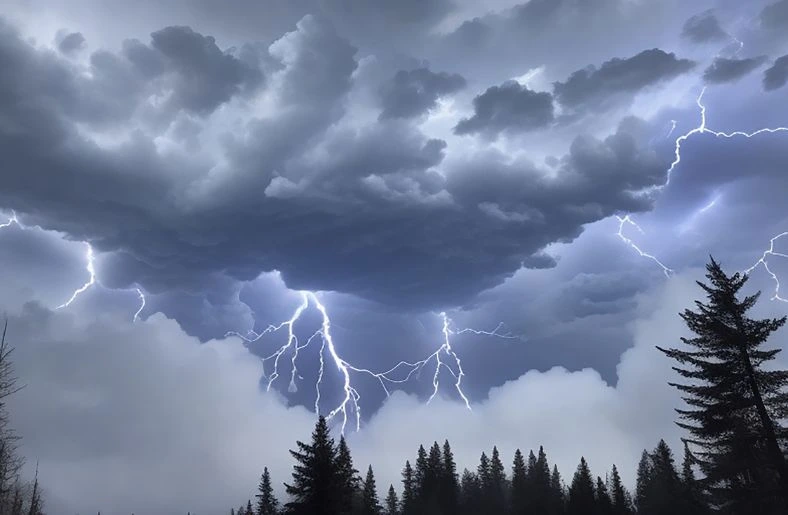Scientists are increasingly alarmed to discover that “Hurricane Milton” has rapidly developed from a tropical storm into a ‘Category 5’ hurricane, the most intense level, within just 24 hours. This phenomenon is attributed to rising ocean temperatures, which could potentially create a ‘Category 6’ hurricane in the future. But, what are these ‘categories’ being thrown around? Well, it is referred to as the Saffir-Simpson Hurricane Wind Scale. It plays a crucial role in conveying the potential damage these storms can inflict. Traditionally, this system categorizes hurricanes into five distinct categories based on sustained wind speeds and the expected impact on infrastructure and human life. Recently, there has been growing discourse about the possibility of a Category 6 hurricane. In this article, we will explore the existing categorization system, discuss the implications of a potential Category 6, and consider the likelihood of encountering such a storm in 2024.
The Saffir-Simpson Hurricane Wind Scale
The Saffir-Simpson Hurricane Wind Scale categorizes hurricanes into five levels:
- Category 1: Wind speeds of 74-95 mph (119-153 km/h) can cause minimal damage, primarily to unanchored mobile homes, trees, and power lines.
- Category 2: Wind speeds of 96-110 mph (154-177 km/h) can lead to moderate damage, including significant damage to roofs and windows of homes.
- Category 3: Wind speeds of 111-129 mph (178-208 km/h) are classified as major hurricanes, causing devastating damage, particularly to poorly built homes and commercial properties.
- Category 4: Wind speeds of 130-156 mph (209-251 km/h) result in catastrophic damage, with most trees uprooted and power outages lasting for weeks or months.
- Category 5: Wind speeds of 157 mph (252 km/h) or higher can lead to complete destruction of buildings, with a high percentage of framed homes destroyed and total power loss for an extended period.
These categories help meteorologists and emergency management officials communicate the severity of a hurricane and the urgency of preparation for those in the affected areas.
The Debate on Category 6
The conversation around the concept of a Category 6 hurricane gained momentum as climate change exacerbates weather conditions, leading to more intense storms. Proponents argue that as sea surface temperatures rise due to global warming, we could see hurricanes that exceed the wind speeds currently classified as Category 5.
In 2019, the World Meteorological Organization (WMO) held discussions on this topic, emphasizing that while the Saffir-Simpson scale effectively communicates wind speeds, it does not account for the increasing rainfall and storm surge associated with the intensifying storms. This has led to calls for an update or expansion of the current categorization system to include a Category 6 that would encompass these more severe impacts.
The Scientific Basis for a Category 6
Meteorologically speaking, the conditions required for a hurricane to escalate to a Category 6 would involve sustained wind speeds exceeding 200 mph (322 km/h). Such extreme conditions would likely require not just warmer ocean waters but also an atmospheric environment conducive to the rapid intensification of hurricanes.
Research indicates that storms are indeed becoming more intense. A study published in the journal Nature in 2020 noted that the intensity of hurricanes has increased, particularly in the Atlantic. The report highlighted a concerning trend: a higher proportion of storms are developing into major hurricanes (Category 3 and above) compared to previous decades. This trend raises questions about whether the weather patterns leading to the first-ever Category 6 hurricane could be emerging.
While categorizing a hurricane is hard, fun88 is always at the most entertaining category of betting sites!
Will We Witness a Category 6 Storm in 2024?
“Hurricane Milton” is not only the latest storm threatening to hit the state of Florida in the United States, forcing over 3 million residents to evacuate, but it also serves as the clearest evidence that ‘global warming’ is having an impact that poses a threat to the lives of more than half the world’s population. It has transformed from a tropical storm into a Category 5 hurricane, the highest level, in just 24 hours.
How Intense is Hurricane Milton?
Hurricane Milton was classified as a tropical storm on Sunday afternoon before it transformed into a Category 5 hurricane with wind speeds reaching 285 km/h. This makes it the third most intense storm recorded in the history of the Atlantic Ocean.
What is concerning is that Hurricane Milton may not stop there and is likely to intensify into a ‘Category 6’ hurricane, a level that has never been officially defined in history. To date, the world has relied on the ‘Saffir-Simpson Hurricane Wind Scale’ to classify hurricane intensity, which uses wind speed as a measure and is defined by only five categories.
However, many scientists predict that rising global temperatures will increasingly lead to hurricanes that surpass existing records, potentially making such events more common. As a result, the current five-level scale may no longer be sufficient.
Conclusion
The Hurricane Categorization System, specifically the Saffir-Simpson Hurricane Wind Scale, plays a vital role in understanding and communicating the potential impacts of hurricanes. The ongoing discussions about the potential for a Category 6 hurricane reflect the realities of a changing climate, which has led to more intense storms. As we approach 2024, the possibility of encountering a Category 6 hurricane remains uncertain but increasingly plausible. Continued research, adaptation of categorization systems, and proactive measures will be essential in preparing for future hurricanes and safeguarding communities from their devastating impacts.




